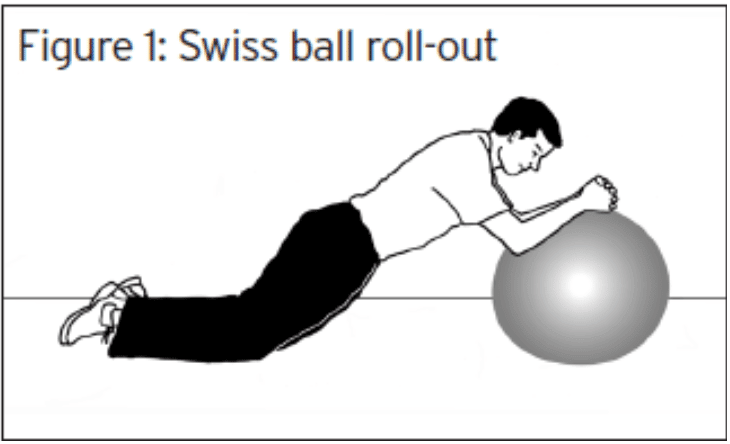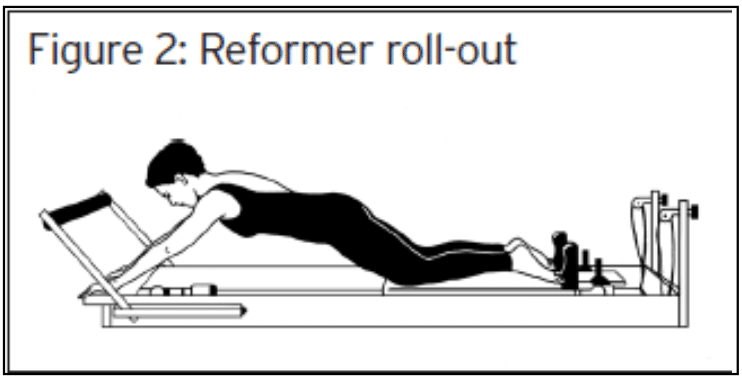Running might appear the most natural thing in the world, but for many who try, it certainly does not come naturally, nor even easily. The awkward reality is that many people simply shouldn't be running at all if they would like to avoid ongoing injury. Among the rest of us, running styles differ so much that it is fair to say everybody's individual running style will be exceptional -- after all, we all differ slightly in our body position, our lower limb muscle recruitment and our foot placement when striking the floor. El Paso, TX. Chiropractor, Dr. Alexander Jimenez has a look.
For a lucky few, running does appear to come naturally. But most individuals who aspire to run well and injury-free will require work in their technique and overall postural control.
Chiropractors are just as likely as anybody else to be confused by the large amount of analysis available on the biomechanics of running; it's really hard to make sense of information like the subtalar joint axis or level of lumbar rotation whenever you are attempting to figure out what's gone wrong with the wounded client running on a treadmill in front of you.
I have previously written about the method of 'pose running' as one approach which I believe to be highly effective for training individuals to conduct while avoiding injury. This report focuses especially on the technique fault of poor lumbopelvic management, which I think is essential to injury-free running.
Some People Should Not Run
Not all of us are born athletes, and some folks are intrinsically not designed to run. Others will struggle because of a combination of physiology and lifestyle variables. Although the following list is probably not exhaustive, here are some of the main sorts of people that will be more prone than average to running-related injury, and will certainly struggle to sustain any longevity of running form.1. Large Q angles
In women with wide pelvises and a large Q angle, the line of force through the femur is directed more medially, placing asymmetrical force through the lower limb.2. Pregnancy-related injury
It is common for women to suffer pelvic ligamentous injuries during pregnancy. Unless they have undertaken appropriate muscular retraining, these women’s pelvises will remain slightly unstable, and unable to withstand the large forces involved in running.3. Sedentary jobs
Such workers are at risk unless they allow sufficient time in their training for lumbopelvic muscular control and muscle lengthening; eg, to gain an adequate range of active and passive hip extension.4. Position of tibial tuberosity
Some people are born with their tibial tuberosities at a more lateral angle down from the patella. This forces the quadriceps to pull at a more lateral angle, leading to patellofemoral pathologies.5. Late starters
Taking up running at a later age in life (and that means from late 20s onwards) leads to higher injury risk. I believe the neuromuscular activation patterns established in early life probably enable people to optimally recruit the muscular control needed for running.6. Old leg injuries
Previous lower-limb injuries need to have been rehabilitated adequately (eg, sprained ankles should have regained full ankle dorsiflexion).7. Physically demanding jobs
Those who work in very strenuous occupations may well not be getting adequate load reduction or rest between their running sessions to enable tissue healing to occur. I treated a young AFL player with recurrent groin pain/osteitis pubis, who kept re-injuring: his work as a builder required him to push and pull heavy loads and be constantly going up and down ladders.
Muscular Control Is the Secret
Nicholas Romanov, the leader of this pose running style, characterizes the differences between good and bad running this way:'A proper technique has particular perception of lightness, brief support, no pressure on muscles, no feeling of loading On your joints... The opposite -- wrong technique -- goes together with muscle strain, loading on your joints, heaviness...' (www.posetech.com)
Over time that I've been involved with conducting athletes, I have come to consider that static stretching is likely Less important and less successful in warding off harm and recovering from it than sufficient muscular strength, endurance and control at crucial sites.
Like I have previously mentioned, the pose method is 1 method that runners can really work on muscular control and postural dynamics in activity-specific positions. Anyone who adheres to this technique should be ready for a great deal of practice in order to learn proper alignment and muscle recruitment.
Pose places plenty of focus on lumbopelvic and eccentric knee muscle management, particularly the way that knee and Hip muscles operate when the mid-foot strikes the floor.
I realized that the need for great lumbopelvic stability partially as a consequence of my own early experiences in practicing pose running. I Discovered I was getting a great deal of calf muscle soreness at the first phases, and really the pose method could lead to jet muscle sprains.
The method requires the runner to lean or 'fall' forwards and pick up their foot off the ground together with the hamstrings. This certainly develops a lot of speed but can place undue strain on the anterior musculature of the joints and leg of the lower back. The eccentric load around the calf will be enormous and often contributes to physical breakdown of this muscle.
The underlying cause of the calf strain, however, is that the pelvic place the runner has embraced so as to lean Forward to gain momentum. It is very easy to over-do the normal inclination to hinge forward from the hips while jogging, which places the shoulders a very long way before the buttocks, also leads the runner to rely in their erector spinae and hamstring muscles to take the strain of the running stride. It is actually not surprising that all these athletes create symptoms within their hamstrings and low backs.
Set your customer on a stepper machine and you'll probably have the ability to see exactly the same muscular imbalances in action. The patient will stick out their bum and push through their quadriceps, not utilizing much hip joint action at all. These people tend to hang on their erector spinae when leaning forwards with regular activities and might benefit from more low abdominal activation.
This understanding has made me to advocate that any running client who presents with calf muscle tears should be Researched for a loss of pelvic control, particularly in the sagittal plane (uncontrolled anterior-posterior motion). While sports support professionals are utilized to the connection between hamstring injuries and inferior pelvic control, in my experience calf tears tend to ship us looking downwards into the over-pronating foot, rather than upward in the over- extending pelvis.
How To Train The Pelvis To Run
So how should we train our clients’ pelvic stability for running? They need to be able to control forces in all directions of pelvic movement:- lateral
- anterior-posterior
- rotational.
These exercises replicate the forward lean of the trunk on the pelvis, mimicking the running position. The client will not benefit as quickly if they practise lumbopelvic control exercises on their back or stomach, nor if they simply hold static positions rather than practising dynamic control.
Exercise 1a: Swiss Ball Roll-Outs (Figure 1)
- Kneel on the ground with elbows resting on a Swiss ball in front of you. Feet can be in contact with the ground
- Draw in the low abdominal wall as you slide the ball away, feeling that gravity is trying to draw your low back down into extension. You should feel the larger low abdominal muscles working eccentrically to control this movement
- Draw the ball back towards you under control; repeat
- Perform each roll-out over a 3-sec count
- Perform 3 sets of 5 reps
Teaching points:
Watch for shift into lumbar extension/ anterior pelvic tilt as the client loses control of their abdominal support Watch for flexing of the thoracic spine to compensate for lack of abdominal control.
Exercise 1b: Pilates Reformer Roll-Outs (Figure 2)
- Kneel on the Reformer, hips and knees at 90 degrees
- Draw in the low abdominals
- Press back through the arms, stabilizing the shoulder girdle and extending the hips to press the carriage backwards
- On return, flex hips, controlling the movement of the carriage
The client is working on scapular control and engagement of low abdominals. This action is different from the swiss ball exercise, because they have to move the pelvis backwards, rather than the thorax forwards. The movement should be rhythmic and take about 3 sec to complete
On the Reformer you can vary the resistance by adjusting the spring system. The less resistance, the harder it is, forcing the client to use more lower abdominal control.
The client has the option of additional challenge by holding the Reformer bar rather than the end of the machine
Exercise 2: Mirror Running
Technique:- Stand close up, facing a mirror on a wall
- Touch the wall/mirror with finger tips for feedback and begin to run on the spot
- Watch the pelvis during running, taking care to limit any oscillatory (up and down) movements
Encourage the client to use a lot of hip and knee joint action, while minimizing side bending of the low back or up and down movement. The action is similar to jumping very efficiently with a skipping rope – lots of lower limb work but little oscillatory movement of the pelvis. (Pose running officially promotes skipping as a practice activity for running, for this reason.)
Conclusion
Like any athletic activity, some people make running seem easy, but some have to work at it. The reward for those who do not find running simple initially is that they'll truly appreciate advances in their technique, as It removes pain, effort and risk of injury.
Sourced From:
Mark Alexander was sports physiotherapist to the 2008 Olympic Australian triathlon team, is lecturer and coordinator of the Master of sports physiotherapy degree at Latrobe University (Melbourne) and managing director of BakBalls (www.bakballs.com).
Scott Smith is an Australian physiotherapist. He works at Albany Creek Sports Injury Clinic in Brisbane, specializing in running and golf injuries. He is currently working with Australian Rules football teams in Brisbane.
Sean Fyfe is the strength and conditioning coach and assistant tennis coach for the Tennis Australia National High Performance Academy based in Brisbane. He also operates his own sports physiotherapy clinic.
Mark Palmer is a New Zealand-trained physiotherapist who has been working in English football for the past five years. He has spent the past three seasons as head physiotherapist at Sheffield Wednesday FC.
Mark Alexander was sports physiotherapist to the 2008 Olympic Australian triathlon team, is lecturer and coordinator of the Master of sports physiotherapy degree at Latrobe University (Melbourne) and managing director of BakBalls (www.bakballs.com).
Scott Smith is an Australian physiotherapist. He works at Albany Creek Sports Injury Clinic in Brisbane, specializing in running and golf injuries. He is currently working with Australian Rules football teams in Brisbane.
Sean Fyfe is the strength and conditioning coach and assistant tennis coach for the Tennis Australia National High Performance Academy based in Brisbane. He also operates his own sports physiotherapy clinic.
Mark Palmer is a New Zealand-trained physiotherapist who has been working in English football for the past five years. He has spent the past three seasons as head physiotherapist at Sheffield Wednesday FC.






